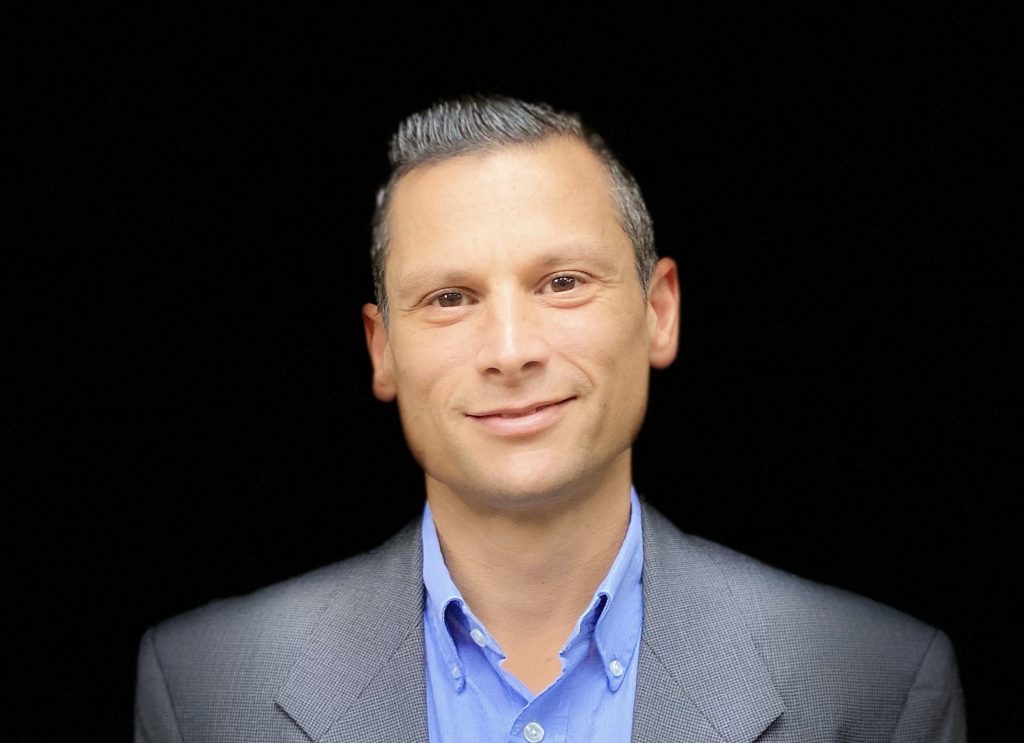An Ambitious Climate Modeling Project Hopes To Inform Energy Policy

Climate change poses significant challenges for policymakers, whether their focus is on national defense or agriculture. But it raises particularly thorny questions related to energy policy. Where should we focus our efforts in order to limit the effects of climate change while still providing reliable energy to users? Where should we invest our infrastructure dollars?
The answers to these policy questions will obviously affect the near-term future of the energy system in the United States, which encompasses everything from power generation to transportation, fuel supply and manufacturing. But these policy decisions will also shape the course of global climate change for generations. That makes it critical for policymakers to make informed decisions. What results might a given policy have? What would happen if they invest in Option A instead of Option B?
Computational models can project the likely outcomes associated with various policy decisions. But these models – and the information that goes into them – have their own limitations. And it is important for these tools to be well-studied in order to give policymakers the best possible information about the likely impact of different policies.
An international team of researchers from a range of disciplines has launched a project called the Open Energy Outlook that aims to address these challenges. To raise the visibility of their effort, the researchers recently published an open access article in the journal Joule. The paper describes the benefits of distributed and collaborative energy modeling teams, which is the approach Open Energy Outlook is taking. To learn more, we spoke with Joe DeCarolis, co-founder of Open Energy Outlook and a professor of civil, construction and environmental engineering at NC State.
The Abstract: Broadly speaking, what is the Open Energy Outlook project hoping to accomplish?
Joe DeCarolis: The ultimate goal of the Open Energy Outlook is to inform U.S. energy and climate policy efforts aimed at reducing carbon emissions. To do so, we plan to utilize computer models to rigorously examine technology pathways that reduce or eliminate carbon emissions across the whole U.S. energy system. A novel feature of our effort is a focus on models, tools, and datasets that are all open source and thus freely available to the public. With this transparent approach to modeling, we hope to build a community of scholars around this effort.

TA: Can you lay out what modeling means in this context? How it’s used, and how it might be used?
DeCarolis: We don’t have a way to run real-world experiments on the global energy system, so we use computer models to project the deployment and utilization of energy technologies across the energy system under different future scenarios. By examining similarities and differences across many different scenarios, we can derive insights that can inform policy.
Climate scientists tell us the increase in global average temperature change should be limited to a maximum of 1.5-2 degrees Celsius relative to the pre-industrial era. In order to meet that target, we need to achieve net neutral carbon emissions from the global energy system sometime around the middle of this century. How are we going to meet this massive challenge? We can extrapolate existing market trends into the near future without formal models. For example, we can expect to see higher deployments of wind, solar and battery storage, along with increasing electrification across the energy system, including battery electric vehicles. But there’s a big gap between these short-term expectations and the end-game of carbon neutral energy systems. That’s where the models come in handy – they help us explore detailed future pathways that get us to zero emissions.
As an example, electricity systems with a high share of renewables will need to be able to store energy for a long time, since there’s a lot of variability in energy production from season to season. That is well beyond the short-term duration (i.e., 2-8 hours) provided by lithium-ion batteries.
One option for addressing this challenge would be to electrolyze water to make hydrogen, which we can store in large amounts. But then we’d need to use hydrogen directly as fuel, or cost-effectively convert it back into electricity or into other fuels for use across the energy system.
Another option might involve a high share of nuclear power generation in the electric sector, which doesn’t require storage. That would have to be coupled with a high degree of electrification across the transportation, building and industrial sectors. We can run energy system models under different assumptions to observe how these different options affect energy technology deployment, cost and carbon emissions.

TA: And this type of modeling is your area of expertise, right?
DeCarolis: Yes. My research focuses on the development and application of energy system models. At NC State, our team developed Tools for Energy Model Optimization and Analysis (Temoa), an open source energy system model. We developed Temoa for two reasons. First, we wanted to enable repeatable analysis. Anyone should be able to download our source code and data and replicate published results – it’s a fundamental tenet of science. Second, the model is designed to perform different types of sensitivity and uncertainty analysis. This aspect is crucially important, as future uncertainty in the energy space is very large, and we need to take it into account when thinking long-term about policy, technology deployment, emissions, and costs. Temoa is serving as the key model underpinning the Open Energy Outlook.
[Editor’s Note: You can learn more about the Temoa model here: https://temoacloud.com/. Also, DeCarolis recently gave a talk on energy modeling, high performance computing and the Open Energy Outlook, which you can view online here: https://www.lib.ncsu.edu/events/energy-systems-modeling-high-performance-computing-resources.]
TA: Why is modeling so important when it comes to discussions about climate and energy policy?
DeCarolis: As I mentioned, we will need to fundamentally transform the global energy system over the next few decades to reach net zero carbon emissions. Achieving such an unprecedented goal requires an aggressive, coordinated effort across all sectors of the economy. Furthermore, energy infrastructure – including refineries, pipelines, power plants, transmission lines, buildings – is expensive and long-lived. Once such units are constructed, they often operate for decades. So investments being made right now affect our ability to achieve zero emissions in 2050 or 2060. Collectively, these investment decisions can also create path dependencies, whereby the infrastructure we develop today begets infrastructure of a similar type in the future. For example, a focus on utilizing cheap natural gas may make economic sense today, but the drilling platforms, pipelines, turbines and other infrastructure related to natural gas will be around for a long time, and may inhibit the transition to alternative forms of energy.
Energy system models are useful because they allow analysts to let the system play out over the next several decades under different assumptions. They help us see more clearly how these short-term investment decisions affect our long-term goals, and how the properly designed policies can put us on the right path.

TA: How does the Open Energy Outlook fit into this?
DeCarolis: Within the United States, many of these modeling efforts are performed by government agencies and laboratories. For example, the Energy Information Administration uses the National Energy Modeling System (NEMS) to produce the Annual Energy Outlook, which is regarded as the official mid-term energy outlook of the U.S. government. However, NEMS was designed to look at perturbations to a baseline, not the fundamental structural changes required to dramatically reduce or eliminate carbon emissions from the U.S. energy system. There are several other U.S. modeling efforts, but in general they: do not model the transition to net zero carbon emissions; lack critical detail regarding energy system expansion and operation; or are not open source and thus cannot be carefully scrutinized. The Open Energy Outlook is designed to help fill this gap, with the resulting analysis used to inform future policy.
But our ambitions extend beyond this outcome-focused goal. We also want to change the approach to energy system modeling.
First, we want to maximize transparency in our effort. A prerequisite for transparency is open source code and data, but transparency demands more than that. It requires careful documentation of the model and input data, with a narrative that clearly outlines key assumptions and caveats.
Second, we want to develop a community around the effort. The boundaries around the energy systems we are trying to model – in space, time and the complex dynamics underlying energy system development – are extremely broad. These models not only try to incorporate physical and economic principles, but also consider how humans make decisions about energy infrastructure. We need a community of scholars from different disciplinary backgrounds and domain expertise to weigh in on these important issues as they pertain to the modeling analysis.
TA: So, the recent piece in the journal Joule is what? A call to arms? What are you hoping will come from it?
DeCarolis: The Joule piece is focused on the model development process. Historically, the type of modeling work we’re doing for the Open Energy Outlook would take place within the walls of a single institution. There are a couple of limitations with such an approach: there might be limited expertise to address the myriad challenges in energy system modeling, and some of the most long-lived and well-established modeling efforts are conducted by government agencies or intergovernmental organizations that may have limited scope or are subject to political considerations.
During our first Open Energy Outlook workshop this past January, we realized that our modeling team – approximately 35 experts with diverse expertise across two dozen institutions – represents a new kind of distributed effort aimed at performing model-based analysis. To be fair, there are already distributed modeling efforts in Europe, but they often involve large multi-institutional teams and are well-funded by the European Union.
In our case, we’re trying to create a new distributed effort from the bottom-up with limited funding. All the elements now exist to do this. We are utilizing open source models and data, allowing us to work collaboratively without any concern over intellectual property. And we have all the tools we need to coordinate the analysis: distributed software revision control systems, communication platforms, video-conference capabilities, and social media to push our messaging and seek feedback from the broader community of modelers and analysts. We think our distributed effort can serve as blueprint for other efforts. In the long run, using the tools at our fingertips can lead to more inclusive modeling efforts by including folks who normally wouldn’t be involved in energy system modeling.
TA: What is the Open Energy Outlook group working on at present?
DeCarolis: We’re currently in the process of building the large input dataset that will be used to conduct analysis. When complete, the database will include a detailed representation of U.S. fuel supply, electricity, transport, buildings and industry. A preliminary version of the database is already available in our GitHub repository: https://github.com/TemoaProject/oeo. In addition to the eventual report we plan to produce, we hope the input database and associated documentation will serve as an important resource for other modelers and researchers. We plan to have a complete version of the input database and documentation ready in the next few months.
TA: What’s next for the Open Energy Outlook team?
DeCarolis: The full team will reconvene virtually early in the new year and start planning for the first edition of the Open Energy Outlook report, which will be released in early 2022. For folks who might be interested, they can join our public mailing list (https://oeo.groups.io/g/main) and check our website (https://openenergyoutlook.org/). We welcome feedback and contributions to this effort.
- Categories: